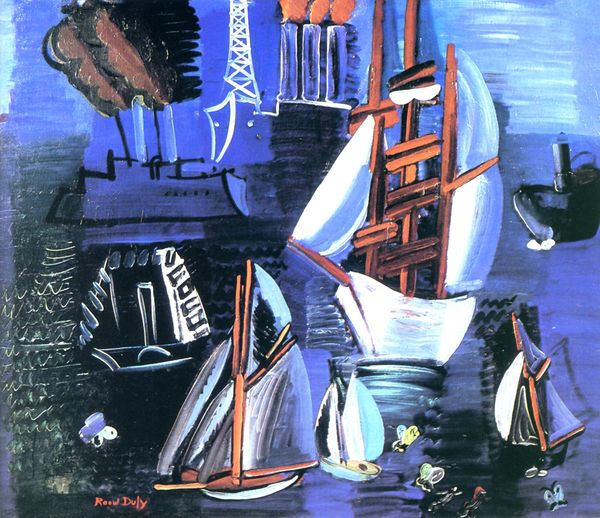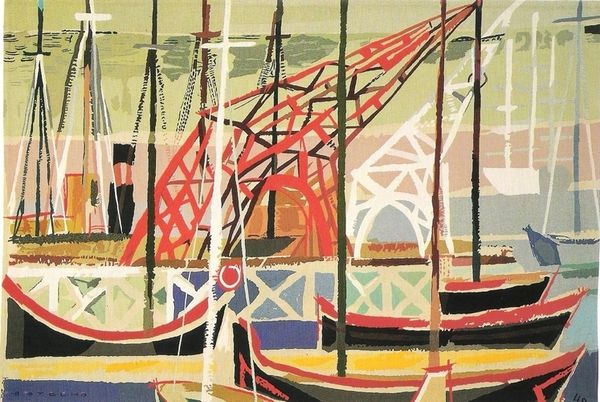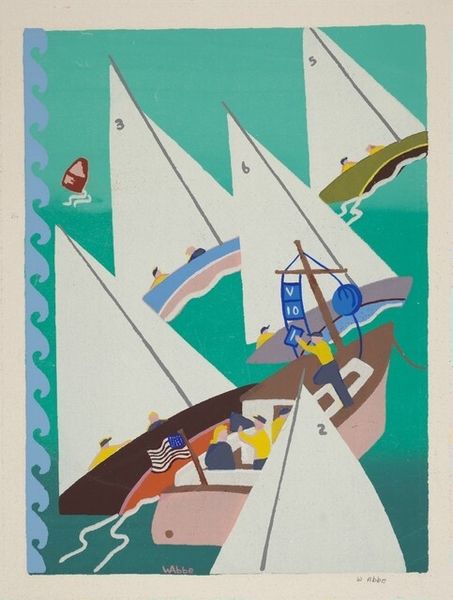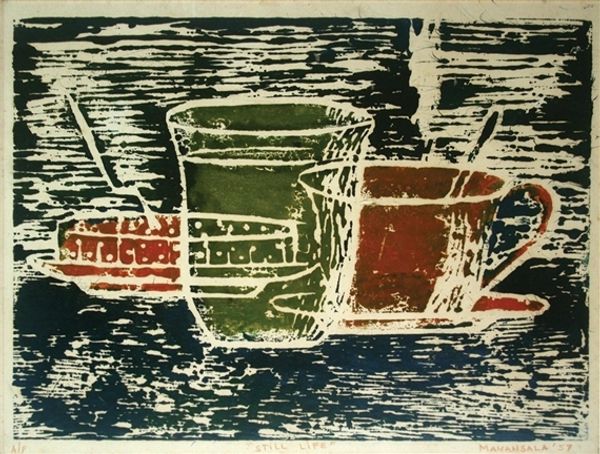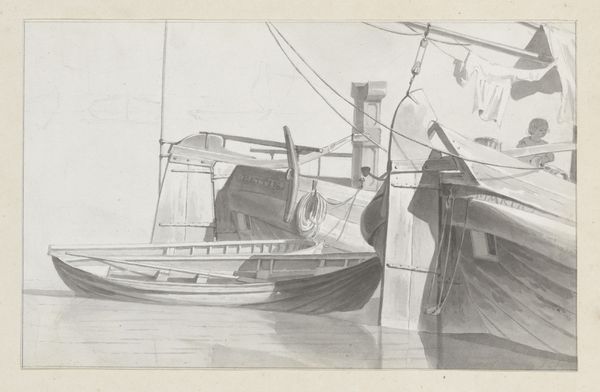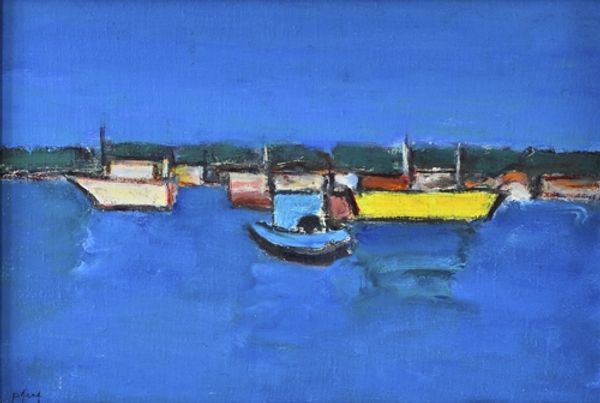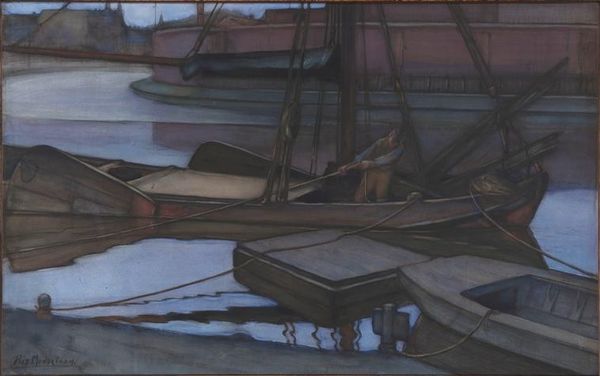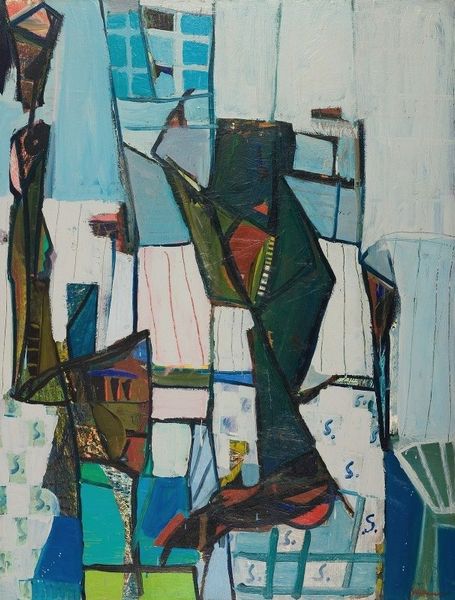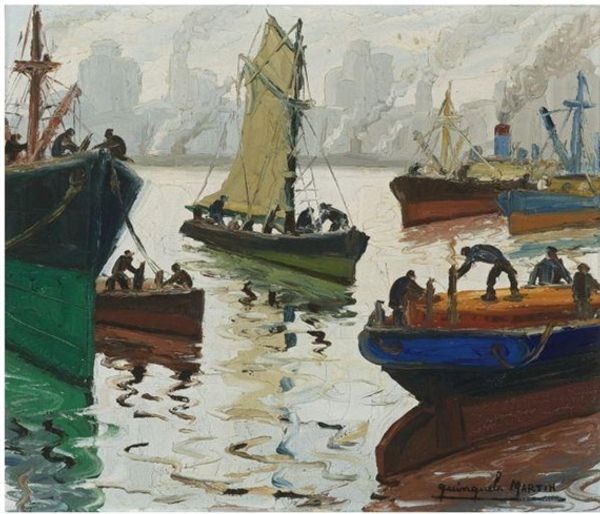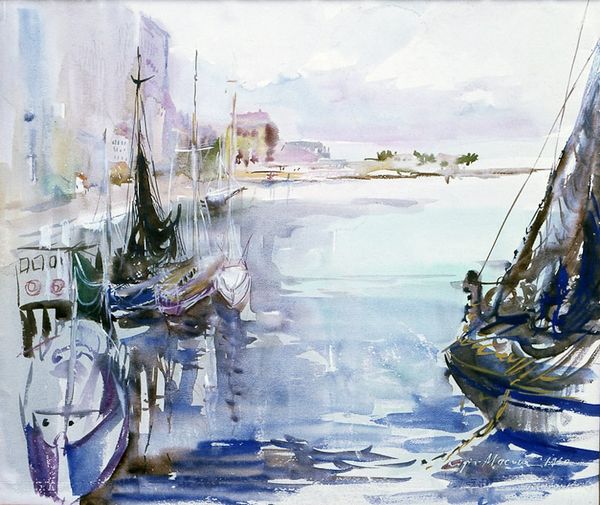
Copyright: Anatol Petrytsky,Fair Use
Editor: Here we have Anatol Petrytsky’s "Harbor," painted in 1931. It looks like acrylic on canvas, with a flurry of boats reflected in the water. It has a somewhat chaotic feel, but also peaceful because of the light palette. What strikes you about it? Curator: It is interesting to observe the application of acrylic paint in 'Harbor,' since commercial production began around the 1950s and only later acrylic would allow for a high degree of industrial control and standardization. Perhaps "acrylic" refers to a more modern relayering or repainting of this earlier work? With a closer material inspection, could we see more evident the hand of the artist? Consider the working conditions of painters in the Soviet Union at this time; state-sponsored materials, the demands for specific subject matter reflecting industrial progress… How might these conditions have shaped Petrytsky's artistic output and the labor that went into this painting? Editor: That’s a very interesting point about acrylics, it could be added later, but in that case, wouldn’t this new layer modify our interpretation? Curator: Precisely. By examining the material history of the artwork – the availability of materials, the artist's access to them, the techniques employed, and any subsequent alterations – we can gain insight into the cultural and economic context of its production and also its value. Does the artist's labour challenge pre-conceived notions? Editor: I see, so focusing on the "how" and "why" of its making helps reveal a bigger picture. Curator: Exactly. Analyzing "Harbor" through its materials and processes can highlight a contrast with the impressionistic style the museum suggested in their analysis, and reveal deeper connections to labor, value, and societal conditions, then and now.
Comments
No comments
Be the first to comment and join the conversation on the ultimate creative platform.
